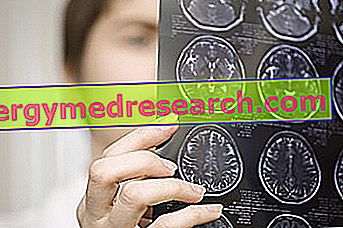Edited by Andrea De Lucchi
Concluding the analysis of the shoulder girdle it is necessary to include other muscle districts which at first sight may have little to do with this functional complex.
These are muscles that perform their main function at the level of the elbow joint, thus belonging to the upper limbs but which, being biarticular, also affect the scapulo-humeral articulation. Moreover, two other muscles have a flexor action at the level of the elbow thus helping the action of the brachial biceps. All these muscles, besides contributing to the stabilization of the scapulo-humeral joint, have an important stabilizing function of the elbow joint.
Biarticular heads on the bachelor-humeral joint:
1. long head of the brachial biceps
2. long head of the brachial triceps
On the elbow joint:
1. Biceps brachialis
2. Brachialis
3. Brachioradial
4. Brachial triceps
Moving instead to the lower limbs and in particular to the leg, there is a muscle which, due to its anatomical characteristic, affects both the knee joint and the ankle joint (tibio-tarsal). This is the triceps of the sura which has two biarticular heads and one monoartcolaria.
Biartcular heads on the knee joint:
Superficial muscle:
1. Gastrocnemius (or twins)
Only on the ankle joint:
Deep muscle:
1. Soleus
Outline of descriptive and functional anatomy:
The brachial biceps is a biarticular muscle with two ends and two origins: that of the long head is at the level of the superior margin of the glenoid cercine in the scapulo-humeral articulation, while that of the short head is on the coracoid process.
Both are inserted with a single tendon on the proximal third of the radium under the elbow joint. Its main motor action is the bending of the elbow but it also determines the supination of the forearm and a slight anteposition of the arm.
The brachial has its origin on the humerus, approximately on the middle third and, going downwards, it is inserted on the proximal third of the ulna. It is a monoarticular muscle that performs its function on the elbow joint by flexing it.
The brachioradial finds its origin on the distal third of the humerus (on the lateral margin) and is inserted with a long tendon on the distal end of the radium. Its muscular belly is located mainly on the forearm, so much so that it is considered by some to be a muscle in this district. Its motor function is to flex the forearm on the arm.
The brachial triceps is formed by three heads, one of which is biarticular and two are mono-articular. The long biarticular head originates from the inferior margin of the glenoid cercine in the scapulo-humeral articulation. The short heads (medial and lateral) monoarticular, originate from the posterior aspect of the humerus and are inserted together with the long head, with a single tendon, on the proximal third of the ulna, just below the joint of the elbow. Motor action consists in extending the elbow joint, therefore it is an antagonist of the previously mentioned flexors.
The triceps of the sura, on the other hand, is a muscle that belongs to the posterior loggia of the leg, and consists of two biarticular bellies, the twins (or gastrocnemius) and a monoarticular belly, the soleus.
The first have their origin on the femoral condyles, posteriorly, while the soleus originates at the level of the proximal third of the leg, between tibia and fibula, to insert all three, through the Achilles tendon, on the heel. The triceps surale causes plantar flexion of the foot. The gastrocnemius intervenes in the flexion of the leg on the thigh.
Exercises for brachial biceps (brachial, brachioradial):
| Neutral position: | Curl with barbell in upright position |
Curl with dumbbells in an upright position | |
Curl with dumbbells in a sitting position | |
Polyercoline curl in an upright position | |
Arm position: | Curl with barbell on bench Scott |
Curl with Scott bench handlebar | |
Polycholine curl on Scott bench | |
Concentrated biceps | |
Larry Scott machine | |
Arm rear-rest: | Curl with inclined handlebar bench |
Polyercoline curl on inclined bench | |
variants: | Prono-supination of the forearm |
Wide or narrow grip | |
Neutral, reverse or hammer socket | |
Angled barbell |
Exercises for brachial triceps:
| polyarticular: | Distensions to the high parallels |
Distensions to the low parallels | |
Tension bar with tight grip | |
variants: | Multy power distensions |
single joint: | Push down pulley |
(neutral position) | Polyercoline push down |
variants: | Wide or narrow grip |
Normal or reverse connection | |
Unilateral variant | |
Arm position: | French press horizontal bench |
French press inclined bench | |
variants: | Wide or narrow grip |
Normal or reverse connection | |
Dumbbells or polyercoline | |
Unilateral variant | |
Arm rear-rest: | Kick back with handlebar |
Polyercoline Kick back |
Exercises for the triceps of the sura:
| For the gastrocnemius: | Calf machine in an upright position |
Calf machine at the multy power | |
Calf with dumbbells | |
Calf at the leg press | |
90 ° calf | |
Free-standing calf | |
variants: | Monopodalic support version |
For the soleus: | Calf machine in a sitting position |
Milled power calf machine in posiz. sitting |



